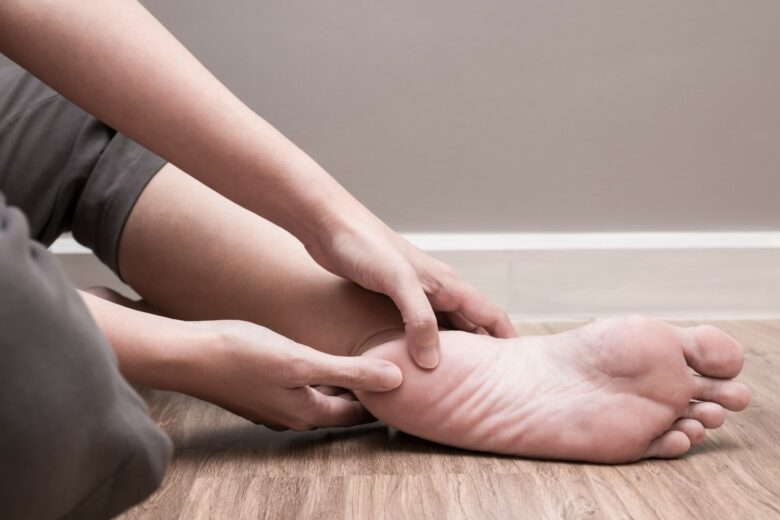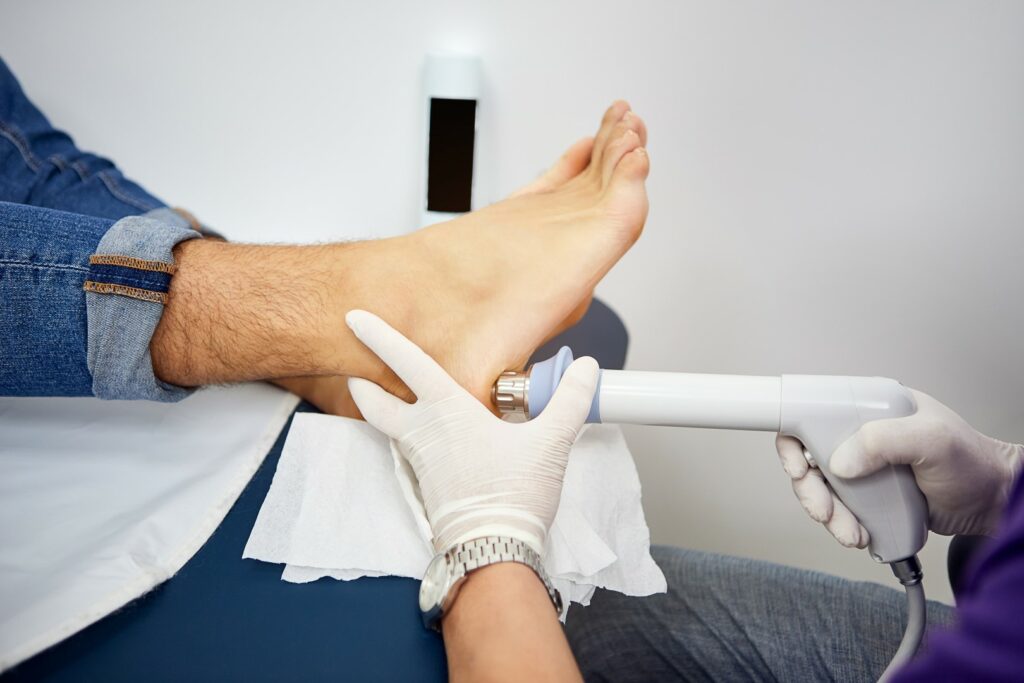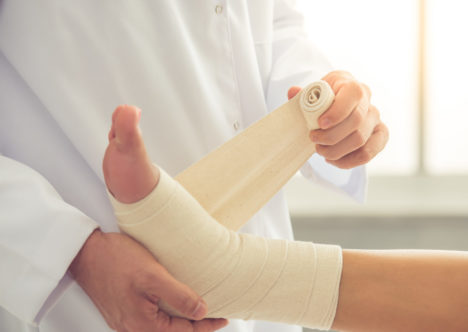Use our convenient online scheduler to book an appointment now.

Are you struggling with persistent heel pain that just won’t let up? It could be a heel spur, a common condition affecting about 15% of people, especially physically active people. In this blog, we’ll delve into the world of heel spurs, exploring their causes, symptoms, diagnosis, and various heel spur treatment options to help you find relief.
What Is a Heel Spur?

Causes of Heel Spurs
Heel spurs are primarily caused by the ongoing strain and tension placed on the plantar fascia and the surrounding tissues. Several factors can contribute to the development of heel spurs, including:
- Repetitive Microtrauma: Activities that put excessive stress on your heels, such as running or standing for extended periods, can lead to microtears in the plantar fascia, triggering the formation of a spur.
- Foot Mechanics: Abnormal foot mechanics, like overpronation (rolling your feet inward) or high arches, can increase the risk of heel spurs.
- Age: As we age, the body’s ability to repair itself diminishes, making older individuals more susceptible to heel spurs.
Heel Spur Symptoms
Heel spur symptoms often overlap with those of plantar fasciitis, making it challenging to distinguish between the two. Common symptoms include:
- Pain: A sharp, stabbing pain in the heel, particularly with the first steps in the morning.
- Swelling: Inflammation around the heel area.
- Tenderness: The heel may be sensitive to touch.
- Reduced Mobility: Difficulty walking or standing for long periods.
- Night Pain: Pain at the end of the day, specifically after being done with all daily activities.
- Calf-tightness: Pain in the calves or calf tightness
Diagnosis of Heel Spurs
If you suspect you have a heel spur due to persistent heel pain, it’s essential to consult a healthcare professional. Diagnosis typically involves:
- Medical History: Your doctor will inquire about your symptoms, physical activities, and any previous injuries or conditions.
- Physical Examination: A physical exam will be conducted to assess the affected area and evaluate your range of motion.
- Imaging Tests: X-rays or other imaging studies may be ordered to confirm the presence of a heel spur.
Heel Spur Treatment
Once diagnosed, there are various treatment options available to manage heel spur pain and promote healing. The choice of treatment depends on the severity of your condition. Here are some common heel spur treatment approaches:
1. Conservative Treatment:
- Rest: Reducing or modifying the activities that aggravate your heel pain can provide relief.
- Footwear: Supportive shoes with cushioning and good arch support can alleviate pressure on the heel.
- Orthotics: Custom or over-the-counter shoe inserts can help correct foot mechanics and reduce strain on the plantar fascia.
- Stretching: Regular stretching exercises can improve the flexibility of the calf muscles and plantar fascia. These heel spur exercises may include calf stretches and toe curls.
- Icing: Applying ice to the heel can reduce inflammation and pain.
2. Medication:
- Nonsteroidal Anti-Inflammatory Drugs (NSAIDs): Over-the-counter pain relievers like ibuprofen can help manage pain and inflammation.
3. Physical Therapy:
- A physical therapist can design a tailored exercise program to strengthen the foot and ankle muscles, improve flexibility, and reduce strain on the heel.
4. Shockwave Therapy:
- Extracorporeal Shockwave Therapy (ESWT) delivers shockwaves to the affected area, stimulating the body’s natural healing process and reducing pain.
5. Corticosteroid Injections:
- In severe cases, your doctor may recommend corticosteroid injections to reduce inflammation and pain.
6. Surgery:
- Heel spur surgery is typically considered when conservative treatments fail to provide relief. The procedure involves removing the heel spur and releasing the plantar fascia tension.
When to See a Podiatrist
If you’re experiencing persistent heel pain, it’s advisable to consult a podiatrist or a foot specialist. However, some signs indicate you should seek medical attention sooner rather than later:
- Severe pain that doesn’t improve with rest and home remedies.
- Inability to walk or perform daily activities.
- Fever or redness in the heel, which may indicate an infection.
- Numbness or tingling in the heel or toes.
- Heel pain in children, as this may be due to a different condition.
Heel Spurs vs. Plantar Fasciitis
It’s important to note the distinction between heel spurs and plantar fasciitis. As mentioned earlier, heel spurs are bony growths on the heel bone, while plantar fasciitis is the inflammation of the plantar fascia. The confusion arises because these conditions often occur together, and plantar fasciitis is the primary source of pain. While heel spurs can exacerbate the discomfort, they are not the root cause of the pain.
If you’re seeking heel spur treatment, don’t hesitate to seek professional medical advice from our expert Foot & Ankle doctors at Town Center Orthopaedics. A podiatrist can provide an accurate diagnosis and guide you through the most appropriate treatment options. Remember, while heel spurs might be the villain in your heel pain saga, they don’t have to be the ending. Request your appointment today.
Join our Mailing List
TCO provides patients with orthopedic problems the trusted resources and patient-centered advice they need to “Feel Better. Move Better. Be Better.”
© 2024 Town Center Orthopaedics | All Rights Reserved


